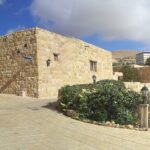Future Trends in Architecture and Engineering: Insights and Innovations by CCG
Outline
Introduction
The landscape of architecture and engineering is evolving rapidly, driven by technological advancements, environmental considerations, and shifting societal needs. At Consolidated Consultants Group (CCG), we are dedicated to exploring these future trends and incorporating them into our projects to deliver innovative and sustainable solutions. This article delves into the key trends shaping the future of architecture and engineering, offering insights into how these developments will impact the industry and transform the built environment.
Emerging Technologies in Architecture and Engineering
- Smart Buildings and IoT Integration
Smart buildings represent a significant leap forward in architectural and engineering design, driven by the integration of Internet of Things (IoT) technologies. These buildings utilize sensors, automation systems, and data analytics to optimize building performance, enhance user comfort, and reduce operational costs. By integrating smart technologies, buildings can monitor and adjust lighting, heating, cooling, and security systems in real-time, creating more efficient and responsive environments.
IoT integration allows for advanced data collection and analysis, providing valuable insights into building usage patterns and energy consumption. This data can be used to make informed decisions about building management, maintenance, and future upgrades. For instance, smart sensors can detect occupancy levels and adjust lighting and climate control accordingly, leading to significant energy savings and improved occupant comfort.
- Advanced Materials and Construction Techniques
Advancements in materials science are revolutionizing construction practices, with new materials offering enhanced performance, sustainability, and aesthetic appeal. Innovations such as self-healing concrete, advanced composites, and smart materials are making buildings more resilient and adaptable. Self-healing concrete, for example, contains bacteria or chemical agents that can repair cracks and extend the lifespan of structures, reducing maintenance costs and improving durability.
Similarly, advanced composites, including fiber-reinforced polymers, offer superior strength-to-weight ratios and durability compared to traditional materials. These materials enable more innovative and efficient design solutions, allowing architects and engineers to explore new forms and structures. Smart materials that respond to environmental conditions, such as thermochromic or photochromic materials, can enhance building performance and user experience by adapting to changes in temperature and light.
Sustainable Practices and Green Design
- Zero Energy Buildings and Net-Zero Goals
Sustainability is at the forefront of architectural and engineering innovation, with zero energy buildings becoming a key focus. These buildings are designed to produce as much energy as they consume over the course of a year, achieving a net-zero energy balance. This is accomplished through a combination of energy-efficient design, renewable energy sources, and advanced building technologies.
Zero energy buildings incorporate features such as high-performance insulation, energy-efficient windows, and renewable energy systems like solar panels and wind turbines. By minimizing energy consumption and maximizing renewable energy production, these buildings reduce their environmental impact and operational costs. Achieving net-zero goals also involves integrating energy management systems that optimize energy use and enhance overall building performance.
- Circular Economy in Building Design
The concept of the circular economy is gaining traction in building design, focusing on minimizing waste and maximizing resource efficiency. In a circular economy, buildings are designed with their entire lifecycle in mind, including deconstruction and material reuse. This approach contrasts with the traditional linear model of "take, make, dispose," which often results in significant waste and resource depletion.
Architects and engineers are adopting strategies such as modular construction, where components can be easily disassembled and reused, and designing for disassembly, which allows materials to be recovered and recycled at the end of a building's life. Circular economy principles also promote the use of sustainable materials, reducing reliance on virgin resources and minimizing environmental impact.
Evolving Design Philosophies
- Biophilic Design: Connecting with Nature
Biophilic design is an emerging philosophy that emphasizes the connection between people and nature within the built environment. This approach incorporates natural elements, such as plants, water features, and natural light, into architectural and interior design to enhance well-being and productivity.
Research has shown that exposure to nature can reduce stress, improve mental health, and increase cognitive function. Biophilic design aims to create environments that foster these benefits by integrating natural elements into spaces where people live and work. Examples of biophilic design include green walls, living roofs, and the use of natural materials and textures.
- Adaptive Reuse and Preservation
Adaptive reuse is a design approach that involves repurposing existing buildings for new uses, rather than demolishing and rebuilding. This strategy preserves the historical and cultural value of buildings while adapting them to meet contemporary needs. Adaptive reuse can also reduce environmental impact by minimizing construction waste and conserving resources.
Preservation efforts often focus on maintaining architectural heritage and historical significance while updating buildings with modern amenities and technologies. This approach allows for a more sustainable and respectful approach to development, honoring the past while addressing current and future needs.
Future Challenges and Opportunities
As architecture and engineering continue to evolve, several challenges and opportunities will shape the industry's future. Key challenges include addressing climate change, managing resource scarcity, and navigating regulatory changes. However, these challenges also present opportunities for innovation and growth.
For example, the need to combat climate change drives the development of new sustainable technologies and practices, creating opportunities for architects and engineers to lead in environmental stewardship. Similarly, advancements in materials science and digital technologies offer new ways to enhance building performance and design.
Collaboration between industry professionals, researchers, and policymakers will be essential in addressing these challenges and seizing opportunities. By working together, the architecture and engineering community can continue to push the boundaries of what is possible and create a built environment that meets the needs of future generations.
Conclusion
The future of architecture and engineering is poised for significant transformation, driven by technological advancements, sustainable practices, and evolving design philosophies. At CCG, we are committed to staying at the forefront of these trends and incorporating them into our projects to deliver innovative and sustainable solutions.
By embracing emerging technologies, adopting sustainable practices, and exploring new design philosophies, we can create a built environment that is not only functional and efficient but also resilient and adaptable to future challenges. As we look to the future, CCG remains dedicated to leading the way in architectural and engineering innovation, shaping the built environment for generations to come.
Frequently Asked Questions
Smart buildings use advanced technologies, such as sensors and automation systems, to optimize performance and enhance user comfort. These technologies enable real-time monitoring and control of building systems, including lighting, heating, cooling, and security. By integrating smart technologies, buildings can achieve greater efficiency and responsiveness.
Zero energy buildings achieve net-zero goals by producing as much energy as they consume over a year. This is achieved through a combination of energy-efficient design, renewable energy sources (such as solar panels and wind turbines), and advanced energy management systems. These buildings minimize energy consumption and maximize renewable energy production to reach a net-zero energy balance.
Biophilic design emphasizes the connection between people and nature within the built environment. It incorporates natural elements, such as plants and natural light, into architectural and interior design to enhance well-being and productivity. Research has shown that exposure to nature can reduce stress and improve mental health, making biophilic design important for creating healthier and more productive spaces.
Get in Touch
For more information on how CCG can help you with your architectural and engineering needs, please Contact Us.













